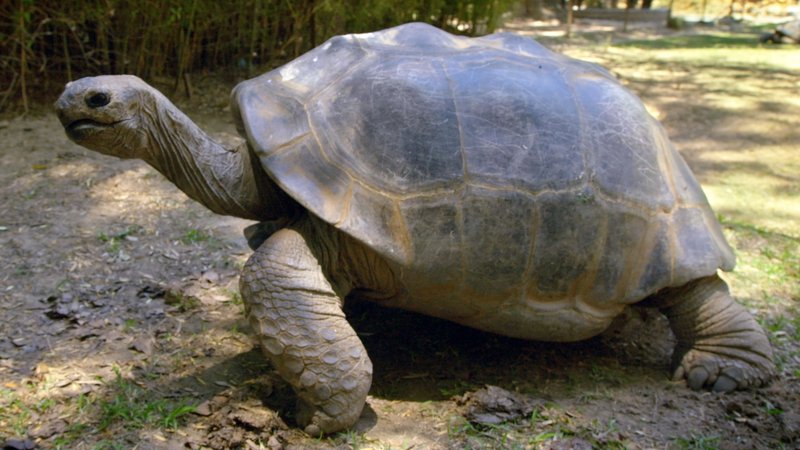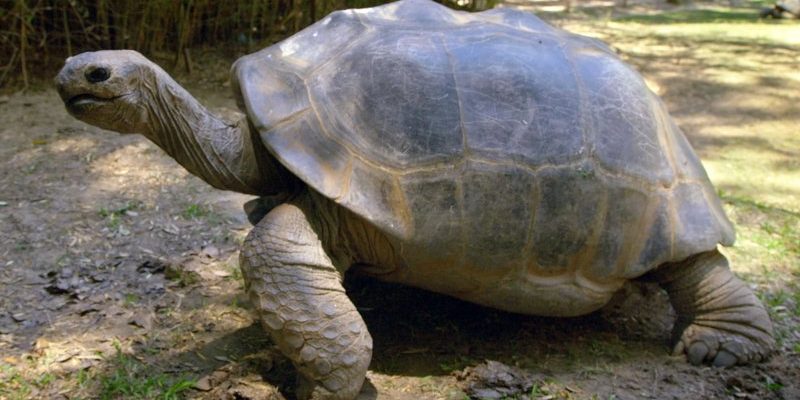
You might be wondering why these tortoises are so special. Well, they’re not just big; they’re a unique part of the Seychelles’ ecosystem, playing a crucial role in shaping their environment. But to truly appreciate the Aldabra giant tortoise, we need to explore its incredible evolutionary journey, from its ancient ancestors to its current status as a conservation icon.
The Origins of the Aldabra Giant Tortoise
The Aldabra giant tortoise (Aldabrachelys gigantea) traces its roots back to the Pleistocene epoch, around two million years ago. During this time, the Earth experienced dramatic climate changes, leading to the evolution of various species. The ancestors of today’s giant tortoises likely evolved from smaller tortoise species that roamed Africa and migrated to the islands of the Indian Ocean, including Aldabra Atoll in Seychelles.
Adaptation played a major role in their evolution. Picture a giant tortoise adapting to a lush island paradise with limited predators. Over time, they grew larger, giving them advantages like better access to food and reduced vulnerability to threats. Their size allowed them to thrive on diverse vegetation, from grasses to shrubs, which was abundant on the islands.
Interestingly, the Aldabra giant tortoise shares a family resemblance with the famous Galápagos tortoise, but they took very different evolutionary paths. The isolation of the Aldabra Atoll and its unique environment shaped their evolution, making them a prime example of how species can develop in isolation.
Physical Characteristics of the Aldabra Giant Tortoise
One of the first things you notice about the Aldabra giant tortoise is its sheer size. These gentle giants can weigh up to 550 pounds and grow about four feet long. Their distinctive domed shells not only look impressive but also serve a practical purpose. The shell protects their bodies from environmental hazards and helps to regulate their body temperature.
You might think that their slow movement is a drawback, but it’s actually quite beneficial. Their slow pace conserves energy, which is essential when food sources are limited. This endurance allows them to traverse their island home without exhausting themselves. It’s common to see these tortoises slowly munching on grasses or basking in the sun, living life at their own pace.
Their skin is often covered in wrinkles and folds, lending them an aged appearance that only adds to their charm. The combination of their size, shell, and unique skin texture makes Aldabra giant tortoises one of the most recognizable creatures in the animal kingdom.
The Role of Ecosystem Engineers
Aldabra giant tortoises are more than just fascinating to look at; they’re crucial players in their ecosystem. As herbivores, they munch on vegetation, clearing pathways and promoting the growth of new plants. Imagine them as natural gardeners, helping to maintain the health of their environment.
Their feeding habits play a vital role in seed dispersal as well. When they eat fruits, they help spread the seeds through their droppings, aiding in new plant growth across the islands. This not only supports the flora but also helps other species that rely on those plants for food and shelter.
Without these remarkable tortoises, the balance of the ecosystems on Aldabra Atoll would shift dramatically. Their presence supports both plant and animal life, showcasing how interconnected nature truly is.
Conservation Challenges and Efforts
Despite their impressive resilience, Aldabra giant tortoises face threats, particularly from climate change and habitat loss. As global warming affects sea levels and weather patterns, their delicate habitat is at risk. Think of it like a delicate balance on a seesaw—if one side tips too far, everything can come crashing down.
Conservation efforts are crucial in protecting these majestic creatures. Various programs are in place to monitor their populations and ensure their safety on Aldabra Atoll. Efforts include habitat preservation, controlling invasive species, and raising awareness about the importance of the Aldabra giant tortoise.
Interestingly, these tortoises are also a success story in terms of captive breeding. Conservationists have successfully bred tortoises in zoos and reserves, which helps bolster their numbers. It’s a testament to what can be achieved when people come together for a common cause.
Living with Aldabra Giant Tortoises
Visiting Aldabra Atoll can feel like stepping back in time, with its prehistoric-looking tortoises wandering freely around the islands. The experience is awe-inspiring, and tourists often leave with a renewed appreciation for wildlife conservation. Many people are willing to pay for guided tours to see these tortoises in their natural habitat, which provides funding for conservation efforts.
If you ever have the chance to observe these magnificent creatures, take a moment to appreciate their role in the ecosystem. Watching them eat, explore, and interact with each other is a reminder of the beauty and complexity of our planet. You might even think of how your actions can impact their future.
The Future of the Aldabra Giant Tortoise
Looking ahead, the future of the Aldabra giant tortoise hinges on ongoing conservation efforts and a commitment to preserving their habitat. With continued monitoring and protection, there’s hope for these incredible animals. It’s a collective responsibility to ensure they thrive for generations to come.
The Aldabra giant tortoise serves as a living link to our planet’s rich evolutionary history. Each tortoise has a story to tell, and we have the opportunity to be part of that narrative. Supporting conservation initiatives means contributing to the survival of this magnificent species.
So, the next time you hear about the Aldabra giant tortoise, remember its journey through time and the importance of protecting these incredible creatures. They not only teach us about the past but also inspire us to take action for the future.
In the grand scheme of things, the Aldabra giant tortoise is more than just an emblem of natural history. It’s a reminder of how every species plays a pivotal role in the tapestry of life, urging us to cherish and protect our planet.

